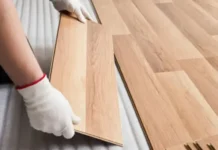Keeping your basement dry can be a full-time job. Both new and old houses can leak. Even if the outside has been waterproofed, these tar products can become brittle and fail over time.
Figure Out Where the Water is Coming From
Of course, covering any leaky windows and fixing any leaking pipes is a critical first step. As a general rule, wet basements come from the seep. Concrete is inherently porous. If the ground around your basement is always wet, moisture will probably start seeping in at the seams or along the cracks. If you notice a spot that is always damp, you will need to clean and dry that area with dehumidifiers before you seal the concrete.
Trenching or Channeling
If your water table is high, foundation experts with ‘58 Foundations recommend adding trenching to direct water away from the concrete. This is one of the first big steps that is needed to waterproof a basement effectively. If your home is older, there may be structures and landscaping that have actually channeled water against your foundation.
Check Your Landscaping
You will need a contractor to come and take a look at what your landscaping is doing. If you don’t have guttering, you will need to add it. If you have foundation plantings, you may need to dig things up and add plastic to reduce seep, or you may need to change up what’s planted against your home. Finally, if you have trees near your home, you may need to trim them back or get them removed to protect your foundation from cracks over time.
The flow of water across your yard may need some monitoring. For example, you may have guttering and long extensions to move water away from your foundation but the grade of your yard may run the water back against the house.
Seal From the Inside
Once the water has been directed away from the outside of your foundation, you will need to seal it from the inside. The first step will be to clean the concrete, which may include removing paint. Shop vac to remove all dust and grit will be necessary. If you choose to use a sealing product, check the label for drying time and drying temperature. Apply your sealant and let it dry completely before you add mortar to seal cracks. Keep your home open to allow air to move and help this sealant dry completely. If you need to sleep somewhere else for a night or two, do so.
An expanding concrete may be a good patch for cracks or holes that are deep. Carefully review any and all instructions on how to mix your patching product. You will also want to carefully review the necessary safety gear. Handling mortar and concrete patches can be quite hard on your skin.
A wet basement can be dangerous over time. Fixing it may take work outside your home and inside your basement. The work will be worth it to keep you and your family safe.



































































